2750
Health and Fitness App Development - Types & Ideas
04 Mar, 2021
6 min read
2750
04 Mar, 2021
6 min read
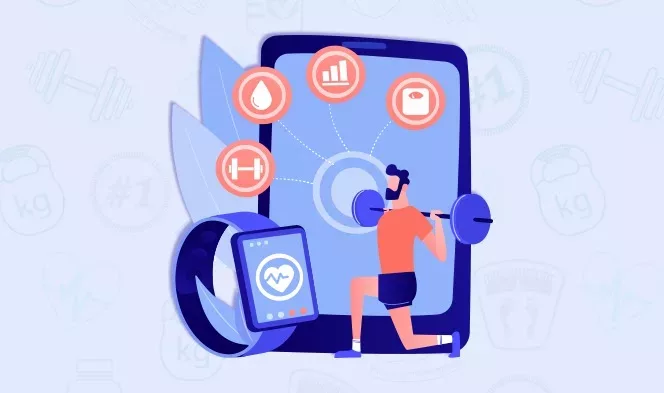
A promise to continue with the fitness regime is a part of our resolution every year. That’s why the first quarter of every year sees the highest growth of fitness and health app downloads. And as always, some of us fail to keep up with the plan. We repeat the same process around year-end, and the cycle continues.
But 2020 was different.
“Historically, January has consistently been the top month for health & fitness app downloads in any given year, but 2020 has bucked this trend. Following a typical month-over-month decline in installs during February, March and April went on to represent record months for health & fitness app adoption, peaking at 339.7 million in April, up 83.6 percent from January and about 42 percent from March.”
That’s what research from Sensor Tower says.
The demand for fitness apps will continue for some time. Therefore, obviously, it’s a good time for fitness businesses and trainers to expand their digital presence with an app. With this in mind, we are sharing this post that will give you some ideas to make an app of your own.
Fitness is not just about an intense cardio workout or calorie tracking. It involves diet, nutrition, mental health and mindfulness too. The fitness sector offers a variety of applications ranging from cycling apps to weight loss apps. If you want to build a fitness app, here are different types of apps to keep your business running.
It’s difficult to know how much activity you need to keep healthy, isn’t it? That’s when such apps help. As the name suggests, these apps keep track of users’ activity. These apps analyze the user’s mobility using sensors like GPS, sensors for heart rate, body temperature, etc. The purpose of tracking apps is to collect data about the user’s activities. This data further helps to keep track of goals. These apps can build charts, save routes on the map, and show the user’s progress.
Let’s explore some of the most popular fitness tracking apps.
So how do these fitness tracking apps work? Most of these trackers consist of sensors
Running trackers, cycling trackers, yoga trackers, and gym trackers are some sub-categories of fitness tracking apps.
We can guide you in choosing the best type of fitness app as per your business need. Let’s get in touch and see how you can give your business a competitive edge with Android/iOS app development.
People have increasingly started to think about the calories they take and the diet they follow. They are ready to spend more on fitness trackers and nutrition planner apps. This explains the rise of diet and nutrition apps. Diet & nutrition apps market is growing with a CAGR of 20.9% in the forecast period of 2020 to 2027.
Diet and nutrition apps are a vast segment. It includes different types as follows
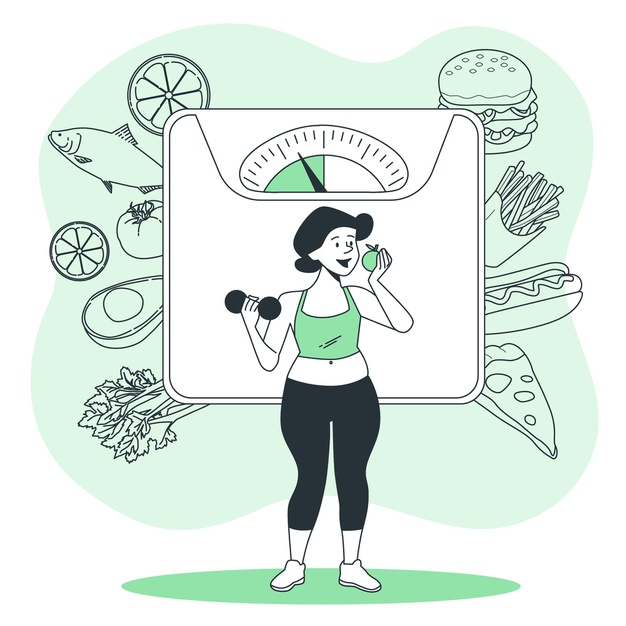
Let’s see how some of these apps work:
MyFitnessPal
In 2018, MyFitnessPal was the top fitness and nutrition app, with $62 million in revenue. Whether the goal is to lose weight, get healthy, change eating habits, or start a new diet, MyFitnessPal is the go-to solution. The app runs around the idea that to lose or gain weight, you need to keep an account of everything you do.
To use the app every day, you log everything that you eat or drink, either manually or connect the app to supported fitness trackers. The app automatically calculates the macros (carbs, fat, protein) in your foods, meals, and recipes. Users can track not only nutrients but also create personalized recipes and meals. The app has a massive food database (11+ million), and that’s why it’s considered one of the best calorie counting apps.
Some diet and nutrition apps in the market are niche-specific. They either focus only on calorie counting or healthy food recipes. For instance, PEP helps users select a simple and healthy menu for each day. MyFitness Pal, on the other hand, is a comprehensive app that includes
As a business owner, you might have a question: how do such apps earn? MyFitness Pal is a free app. But the company earns through premium memberships and ad revenue. The premium version offers advanced tools to track nutrition and removes ads for dedicated users.
In the most basic sense, workout and exercise apps provide users with a set of exercises to keep track of their workout routine. Since workout at home is becoming popular, these apps are seeing a surge.
These apps are for both types of novices – those who are not sure how to structure their workout regime and those passionate to keep a strict routine. Johnson & Johnson 7 Minute Workout app provides short and guided workouts for busy people. Fit Radio app creates a playlist that works as a source of structure for the workout. Some apps work as a logbook allowing users to plan and store information about their workouts. For example, My Workout Planner is a daily planner for managing exercises, creating routines, and recording progress.
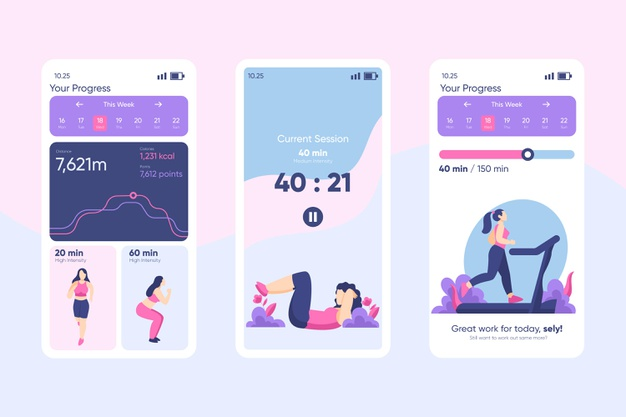
Just like nutrition, and tracking apps, workout apps too have sub-categories. Let’s see the two main categories of workout apps.
Though it doesn’t typically fall under the health and fitness category, it is a great option for people focussed on wellbeing. For your mental as well as pyschological wellbeing, meditation apps are a great addition.
So, how mindfullness apps help?
Such apps provide users with guided meditation practices in today’s rushed lifestyle. You can play a soothing background track or curate your own playlist, opt for timed sessions, and learn guided meditation exercises that suits you.
Developing a meditation or mindfulness app is useful for various kinds of audiences – beginners and even advanced level meditation practitioners. For instance, apps like Headspace and Buddhify are great for guided meditation, whereas Calm also helps with relaxation, and Shine to connect with a community.
Mindfulness or meditation apps also can be categorized into sub sections.
To begin the process of Android/iOS app development for your fitness business, you need to think about its features. We recommend building an MVP. Meaning, launch the 1st version of your actual product with limited features. It will help you understand if your product is successful with the end-user and how to improve it.
We’d love to discuss your app idea and further assist in analyzing the market and deciding the features that you must incorporate in your app. We are an Android and iOS app development company helping business owners build innovative and user-friendly apps. Let’s get in touch so we can provide you with our recommendations as well as estimate your project cost.
All product and company names are trademarks™, registered® or copyright© trademarks of their respective holders. Use of them does not imply any affiliation with or endorsement by them.

Artificial Intelligence (AI)
4158
By Devik Gondaliya
22 Apr, 2025
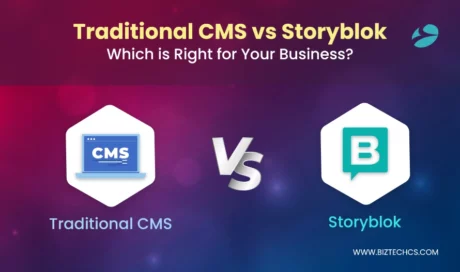
Storyblok
37892
By Devik Gondaliya
02 Apr, 2025
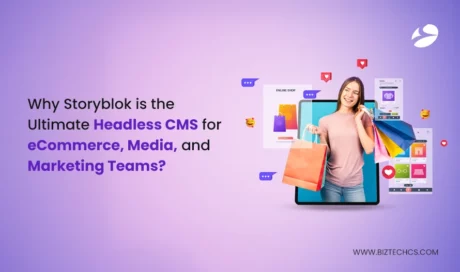
Storyblok
38803
By Devik Gondaliya
01 Apr, 2025